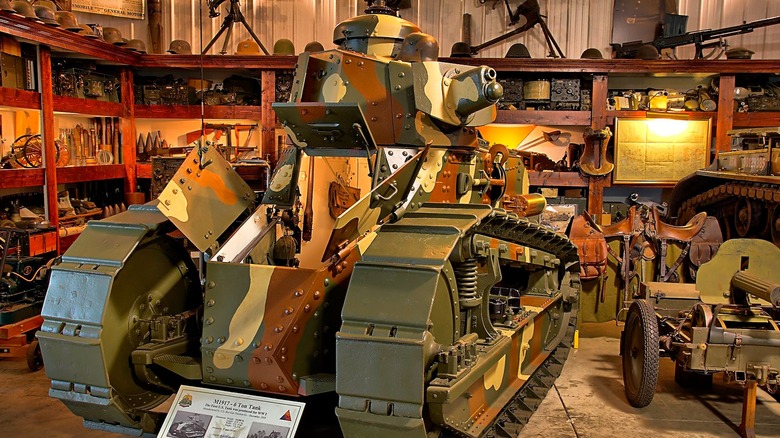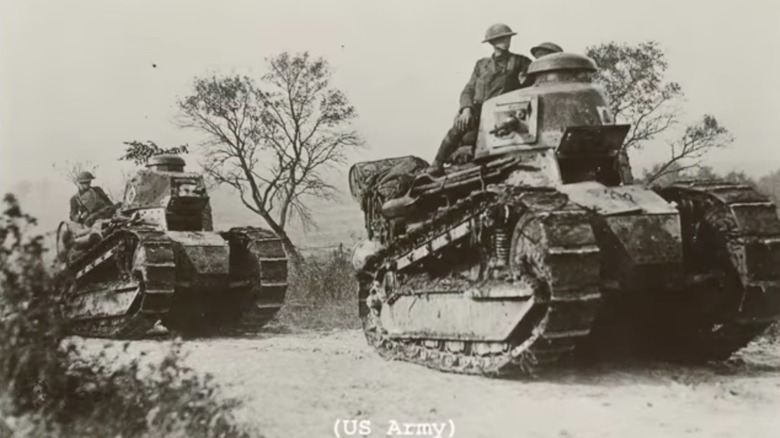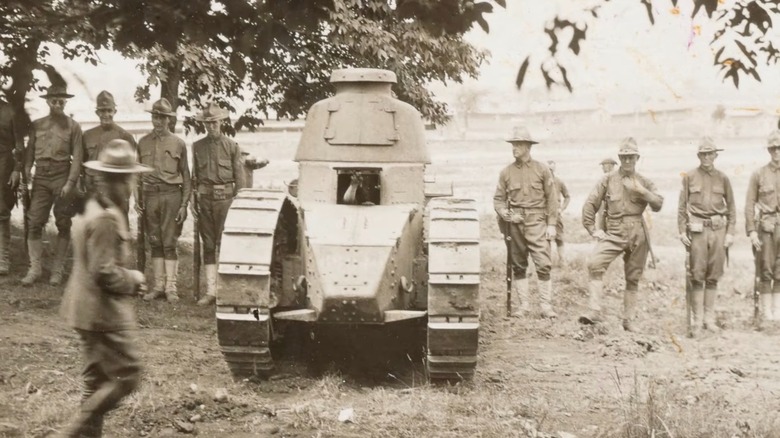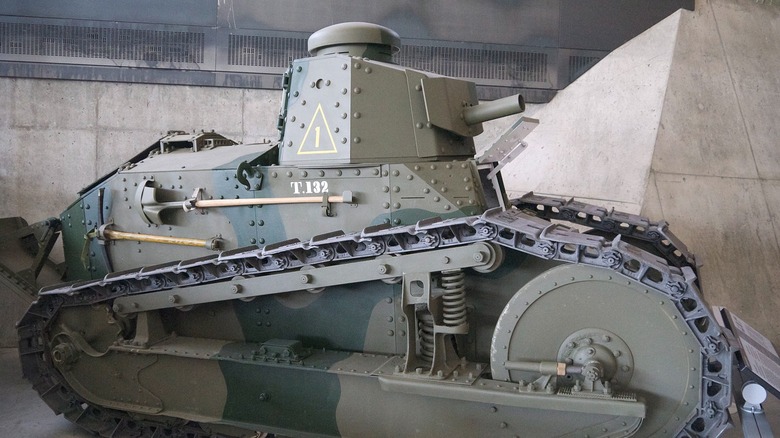The Story Of The US Army's First-Ever Tank
The French and the British saw armored vehicle effectiveness after the U.K. built the first-ever tank called "Little Willie" and introduced it to the frontlines in 1916 at the Battle of Flers-Courcelette and after the success it delivered at the Battle of Cambrai.
With the French industry stretched to its limits, especially as its most advanced industrial provinces and cities were devastated by the fighting, tank production was difficult.
As such, the U.S. entrance into the war was deemed crucial to the war effort. It could provide additional war production capacity to help cover French and British needs, especially in tank creation. So, here's how the U.S. built its first-ever tank, how it served in the Army, and where we can still see its design in tanks on today's frontlines.
[Featured image by John Schaunlaub via Wikimedia Commons | Cropped and scaled | CC BY 3.0]
American armor in the Great War
When the U.S. entered the Great War in 1917, it had no armored vehicles. Gen. John Pershing requested a tank corps for frontline deployment, but you cannot create a tank force if you don't have tanks, so the U.S. Army needed a fleet. However, developing and building tanks takes time, more so if you create them from scratch.
In a show of unity, the French and the British shared their tank designs with the Americans, with the British proposing the Mark VIII Heavy Tank. However, this tank took too long to produce, with the factory where it was supposed to be assembled only finishing construction by November 1918 — just as the war ended.
On the other hand, the French decided to license the Renault FT Light Tank design to the U.S., hoping it could produce the tank in numbers Stateside. Because it was an already existing design, it was meant to be a quick fix while the heavier Mark VIII was still being developed.
This licensed-built tank was named the M1917 Light Tank, with the US initially ordering 4,440 tanks to be built, but only 950 were produced. It was meant to be the first model for the U.S. Tank Corps — the first-ever American armored division. It was assembled by then-Capt. George Patton, who eventually became the commanding general of the 1st Armored Corps in World War II.
There were several delays in building the M1917. For example, American and French factories used different unit measurements. The former used imperial units, while the latter used metric. This meant that American manufacturing facilities weren't suited to build things using French plans.
Of the 4,400 ordered tanks, only 64 were completed by the time the war was declared over. Just 10 made it to France, and none saw combat.
M1917 specifications
The M1917 is not an impressive tank by today's standards. However, it was groundbreaking when it was introduced. The six-and-a-half-ton armored vehicle was armed with a 37mm infantry support gun or a 0.30-caliber machine gun, both on a ball mount.
It featured a 360-degree rotating turret, allowing it to fire in all directions. It's also protected by 1.5cm of rolled face-hardened steel armor to protect the crew. A 42 hp gasoline engine powers this 6,500-kg tank, so don't expect this vehicle to go barreling down the road or trail at the speed of an M18 Hellcat. Nevertheless, its five-and-a-half mile jog was considered sufficient for that time, especially as it was considered more as an infantry support vehicle than a breakthrough spearhead.
Since the M1917 is a licensed-built version of the Renault FT, with modifications made to suit American standards or to improve the original design, it has some slight differences from the latter. Some changes include using a .30 caliber machine gun that utilized American ammunition, replacing the Renault engine with a Buda engine, exhaust placement on the left side of the tank, and using solid steel idler wheels.
Interwar service of the M1917
Even though the M1917 did not meet the Germans on the battlefields of France, it still served the U.S. Army until the early 1940s. The first recorded "engagement" of the M1917 was in 1922 when the Kentucky National Guard used its tanks to drive over illegal alcohol stills used for producing bootleg liquor. Then, in 1927, the Marines deployed their tanks to China to protect international settlements and consulates in Shanghai from civil unrest. However, there were no reports of major conflict against the Americans, and the M1917s did not fire their weapons on civilians.
The M1917 was deployed again in the mainland U.S. in 1932, this time against the Bonus Army — a massive group of World War I veterans demanding the early release of their bonus payments for wartime service. It was also used during the 1934 San Francisco General Strike when the California National Guard parked them in the streets. Thankfully, none of the tanks were used to fire on civilians, although they did have their mufflers removed, making them very loud.
The Army then sold its remaining fleet to Canada at scrap value.
The legacy of the first American tank
As the M1917 is a licensed-built Renault FT, you can say that both tanks have the same legacy. Nevertheless, you can still see the design cues of both armored vehicles in today's tanks. For example, almost all main battle tanks, like the M1 Abrams, have a 360-degree rotating turret.
Another modern-day tank, the Leopard 2, uses a rear-mounted engine. This was first seen on the Renault FT/M1917, which had the same layout — unlike the British Mark-series heavy tanks, which had engines inside the crew compartments.
Although the M1917 did not fire its gun in war and never faced any significant opponent, it was still an iconic design. It served as the basis of the modern tank and was the forebearer of tank design and production in the United States. Without the M1917, we might not have seen some legendary tanks like the M4 Sherman or the M60 Patton.
[Featured image by JustSomePics via Wikimedia Commons | Cropped and scaled | CC BY-SA 3.0]



